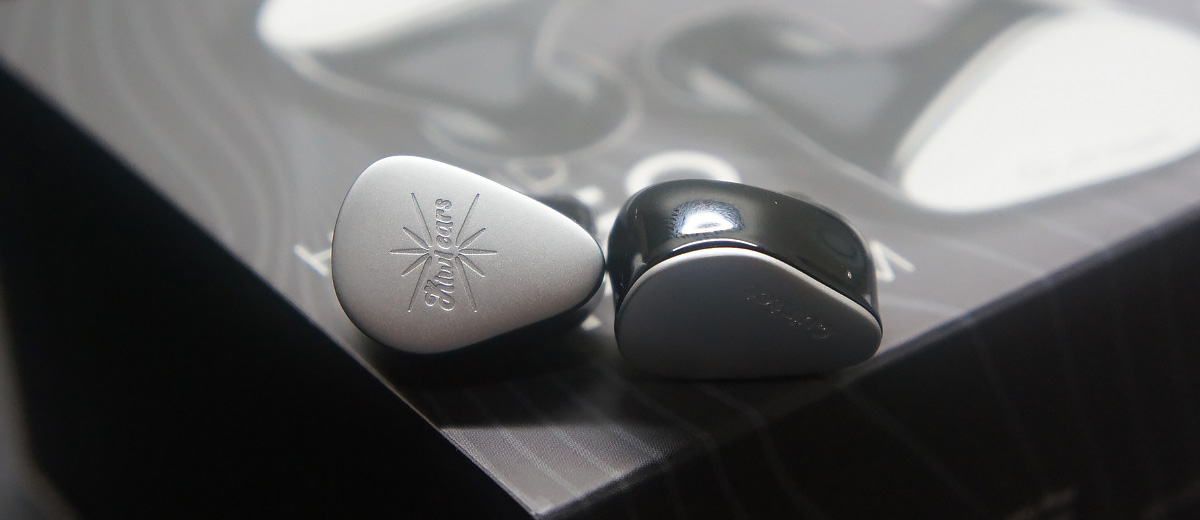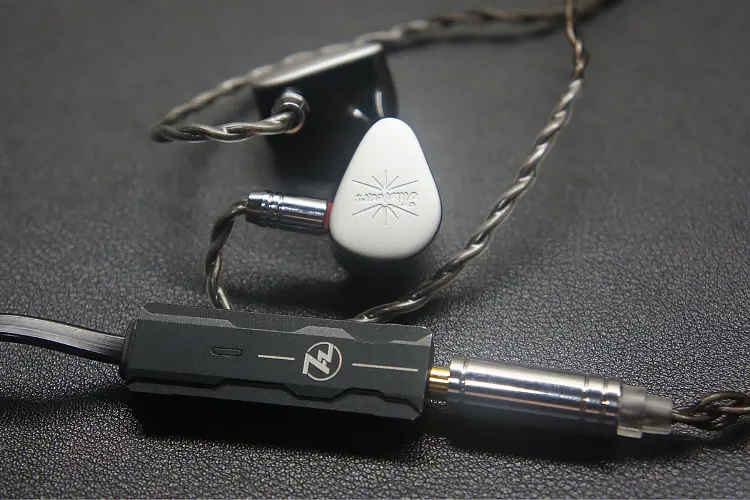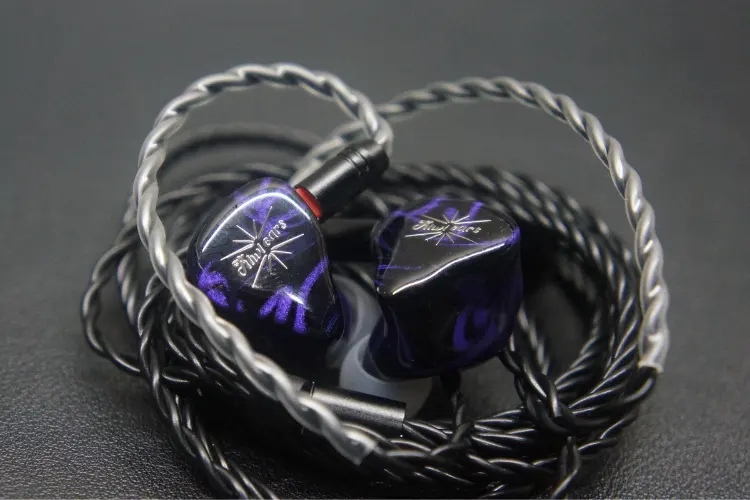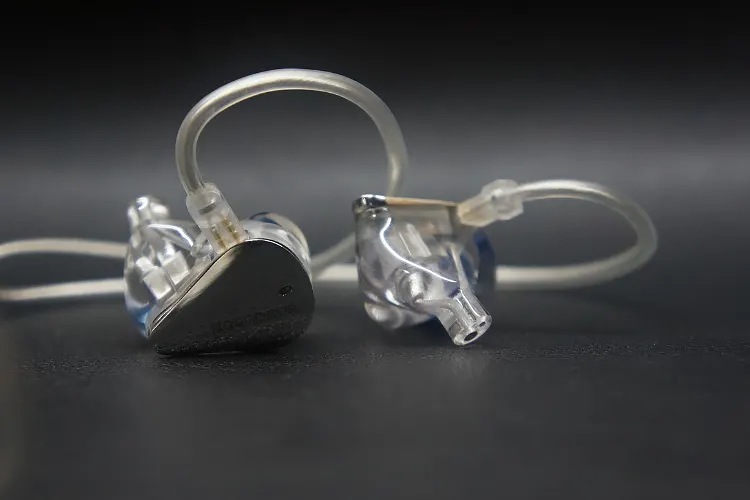Synergy
The Quintet is easy enough to drive, thanks to its average 32Ω impedance and a sensitivity rating of 108dB @1kHz 1Vrms. The earphone can be powered by most devices without the need for an external amplifier.
However, the earphones can benefit from a good source that can provide a clean and powerful sound signal.
In my experience, dongles such as the 7hz SEVENHERTZ 71 or the ddHiFi TC35 were able to maximize the paired sound quality. However, I did notice a slight increase in resolution when I powered it with my Topping L30 II.
In my testing, I found that the Quintet paired best with the ddHiFi TC35 in terms of musicality and day-to-day usability. The TC35 did not add any coloration to the sound, and instead just improved the already good resolution performance of the IEMs.
Select Comparisons
Kiwi Ears Quartet
Technical
The Quartet uses dual 10mm DD and dual balanced armature drivers with an impedance of 32Ω and a sensitivity of 110 dB, whilst the Quintet makes use of a 5 driver configuration with 1DD+2BA+1MPT+1PZT.
The Quintet has an impedance of 32Ω and a sensitivity of 108dB @1kHz, making the Quartet easier to drive.
Design
The Quartet makes use of a smooth resin shell with a swirled black and purple design with a glossy finish, whilst the Quintet makes use of a 3D-printed resin shell with a separate anodized metal faceplate
I found that the Quintet has a slightly smaller shell and fits slightly better than the Quartet. However, the Quartet has a lighter shell and build, making it more comfortable during prolonged listening.
Performance
The Quartet has a more exaggerated V-shaped sound signature when compared to the more gradual U-shaped sound signature of the Quintet.
You get more rumble and presence from the sub-bass on the Quartet, however, this increased bass did have the tendency to bleed into the lower mids region.
The mid-bass on the Quartet is played back with more authority and emphasis, however, the texture of the bass notes was slightly more evident with the Quintet.
The mids region of the Quartet is even more recessed than that of the Quintet. Piano keys, electric guitars, and vocals were not only less detailed but also less forward.
This recess in the Quartet’s mid-range plays no small part in the exciting V-shaped sound signature. The Quintet’s resolving performance is better than that of the Quartet not just because of the difference in tuning, but also because of the Quintet’s technical capabilities.
The treble on the Quartet does come off as more sibilant, giving it more energy and perceived resolution. Cymbal strikes are crisp and have additional sparkle with the Quartet, however, the Quintet’s tamer sound signature makes it less fatiguing and easier to listen to for long periods of time.
Tanchjim Kara
Technical
The Kara makes use of a 1DD + 4BA configuration with an impedance of 27Ω and a sensitivity of 115dB, whilst the Quintet makes use of a 5-driver configuration with 1DD+2BA+1MPT+1PZT.
The Quintet has an impedance of 32Ω and a sensitivity of 108 dB @1kHz. However, in practice, the Quintet was still easier to drive. Additionally, both IEMs make use of the standard 0.78mm 2-pin connector.
Design
The Quintet makes use of a resin shell with a glossy black opaque finish and a separate metal faceplate, whilst the Kara also makes use of a resin shell with a separate translucent plastic faceplate.
The Kara fits better in the ear due to its smaller size, making it slightly more comfortable all around and perfect for all-day listening. However, this does not mean that the Quintet is uncomfortable by any means.
Performance
The Quintet has a U-shaped sound signature with a smooth and gradual emphasis on both ends of the frequency response.
In terms of bass quantity, the Quintet’s execution is more evident. Bass hits have more rumble, whilst also adding more warmth to the overall tonality of tracks. I found bass guitar strums more relaxing and thicker with a bit more energy and comparatively less note weight from the Kara.
Male vocals sounded fuller and more bodied with the Quintet, whilst female vocals sounded more energetic and sparkly on the Kara. Mid instruments sounded muffled and cold on the Kara, making the Quintet more enjoyable to listen to in the long run.
The highs on the Kara are more resolving than that of the Quintet, but it is more sibilant as well. The microdetail between different instruments on the top end is amplified through the Kara, but they have a colder and more sibilant tonality that makes them less enjoyable.
Moondrop Blessing 3
Technical
The Blessing 3 makes use of a dual 10 mm dynamic driver and four balanced armature drivers with an impedance and sensitivity of 14.8Ω and 120 dB @1kHz 1Vrms, whilst the Quintet makes use of a 5 driver configuration with 1DD+2BA+1MPT+1PZT.
The Quintet has an impedance of 32Ω and a sensitivity of 108dB @1kHz, however in practice, the Blessing 3 was harder to drive
Design
Both the Blessing 3 and the Quintet make use of a 3D Printed resin shell with a separate metal faceplate, with the Blessing 3 making use of a polished faceplate whilst the Quintet makes use of an anodized feeling faceplate.
I found that the Quintet fits better in the ear due to its smaller size and lighter build. I found the Blessing 3 uncomfortable at certain times, but I never experienced the same issues with the Kiwi Ear’s design.
Performance
The Blessing 3 has a neutral sound signature, whilst the Quintet has a U-shaped signature with a gradual emphasis on both ends.
The Quintet has a stronger and deeper bass performance. However, both IEMs have a similar level of bass articulation and texture playback.
The Blessing 3 has a more controlled bass response, but the Quintet has a more evident bass response. Bass guitar strums and bass drum hits are richer on the Quintet, and this feeling of warmth extends into the mid-range as well.
Male vocals have more body on the Quintet, however, all other instruments and sounds within the mid-range are presented in a more forward manner and are presented with better-resolving capabilities and texture.
Despite the Blessing 3 being more resolving in the treble region the Quintet is still more sibilant. This is quite surprising since in my experience, better resolving IEMs usually have a more sibilant presentation.
Our Verdict
The Kiwi Ears Quintet is an engaging, well-tuned pair of IEMs that make use of a unique 5-driver configuration. Its smooth U-shaped tuning is satisfying and should be non-offensive for most listeners.
Its use of a PZT and MPT is a novel concept in this price range, Surprisingly, the Quintet was able to tame its 5 drivers into a cohesive and pleasing tuning style.
At the price point, this is a unique IEM that provides an exciting mix of different drivers whilst at the same time maintaining pleasing tonal quality and average-to-above-average technicalities.
Kiwi Ears Quintet Specifications
- Driver Type: 1DD+2BA+1MPT+1PZT
- Plug: 3.5mm Single Ended
- Frequency Response: 20Hz – 30kHz
- Impedance: 32Ω
- Sensitivity: 108dB









